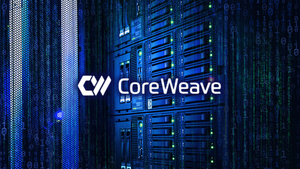Healthy transplanted human glial cells replaced diseased glial cells in the brains of human glial chimeric Huntingtin mice
Additional proof-of-concept for the advancement of SC379, Sana’s pluripotent stem cell-derived glial progenitor cell product candidate
SEATTLE, May 21, 2024 (GLOBE NEWSWIRE) -- Sana Biotechnology, Inc. (NASDAQ: SANA), a company focused on changing the possible for patients through engineered cells, today highlighted that Nature Biotechnology has published a paper titled “Young glial progenitor cells competitively replace aged and diseased human glia in the adult chimeric mouse brain.” This paper showed that when healthy wild-type (WT), pluripotent stem cell-derived glial progenitor cells (hGPCs) – the cells that give rise to the glial support cells of the brain – were transplanted into adult mice that had been neonatally transplanted with mutant Huntingtin (mHTT)-expressing hGPCs, the healthy cells outcompeted and eliminated the diseased glia, ultimately repopulating the brain with the healthy transplanted cells. These data establish an additional proof-of-concept for the development of SC379, Sana’s pluripotent stem cell-derived GPC product candidate, as a potential therapy to deliver healthy allogeneic GPCs to patients with certain central nervous system disorders.
“It is remarkable to see that healthy human glial cells can engraft and function in vivo, and succeed in outcompeting resident glial cells, thereby eradicating the diseased cells from the brain of the mice,” said Steve Harr, Sana’s President and Chief Executive Officer. “We have designed SC379 as a potential glial cell replacement therapy, and these findings support its possible application in a large number of neurological indications, such as secondary progressive multiple sclerosis and the childhood myelin disorders like Pelizaeus-Merzbacher disease, as well as Huntington’s disease and other diseases of glial cells. Our goal is to begin clinical testing of SC379 as early as 2025.”
Steve Goldman, MD, PhD, Sana’s Head of CNS Therapy and lead author on the paper, added, “Diseases of glial cells are among the most prevalent and debilitating conditions in neurology, as they include both the myelin-producing oligodendrocytes and the astrocytic support cells of neurons. We have developed the methods for producing and isolating glial progenitor cells – which produce both oligodendrocytes and astrocytes – from pluripotent stem cells, and for delivering them in the purity and quantity necessary to replace diseased cell populations.”
In the study, human glial chimeric mice were used to model the impact of competition between healthy and diseased human glia in vivo. Genetically tagged WT hGPCs derived from human embryonic stem cells (hESCs) were engrafted into the striata of adult mice, which were neonatally chimerized with hGPCs derived from a sibling line with Huntington’s disease (HD). Over time, the group found that the healthy WT cells overtook the HD cells and repopulated the striatum with healthy cells (54 weeks, P < 0.0001; 72 weeks, P < 0.0001).
The study also evaluated the impact of engrafting younger hGPCs into adult mice that had been neonatally engrafted with separately tagged older glia derived from the same healthy cell line. The data demonstrated that the younger hGPCs rapidly infiltrated the striatum and eventually replaced the older hGPCs, leading to a substantial recolonization of the tissue (P < 0.0001). This was associated with the apoptotic death of the older cells, which was triggered by the introduction of the younger hGPCs and enabled a repopulation of the mouse striatum with the younger cells.
About Sana Biotechnology
Sana Biotechnology, Inc. is focused on creating and delivering engineered cells as medicines for patients. We share a vision of repairing and controlling genes, replacing missing or damaged cells, and making our therapies broadly available to patients. We are a passionate group of people working together to create an enduring company that changes how the world treats disease. Sana has operations in Seattle, WA, Cambridge, MA, South San Francisco, SF, Bothell, WA and Rochester, NY. For more information about Sana Biotechnology, please visit https://sana.com/.
Cautionary Note Regarding Forward-Looking Statements
This press release contains forward-looking statements about Sana Biotechnology, Inc. (the “Company,” “we,” “us,” or “our”) within the meaning of the federal securities laws, including those related to the company’s vision, progress, and business plans; expectations for its development programs, product candidates and technology platforms, including its preclinical, clinical and regulatory development plans and timing expectations; the potential for pluripotent stem cell-derived hGPC transplantation as a treatment for Huntington’s Disease and other glial-based neurodegenerative conditions; and expectations regarding the potential significance and impact of the data, including regarding the potential of SC379 as a potential therapy to deliver healthy allogeneic GPCs to patients with certain central nervous system disorders, including secondary progressive multiple sclerosis, Pelizaeus-Merzbacher disease, Huntington’s disease, and other diseases of glial cells. All statements other than statements of historical facts contained in this press release, including, among others, statements regarding the Company’s strategy, expectations, cash runway and future financial condition, future operations, and prospects, are forward-looking statements. In some cases, you can identify forward-looking statements by terminology such as “aim,” “anticipate,” “assume,” “believe,” “contemplate,” “continue,” “could,” “design,” “due,” “estimate,” “expect,” “goal,” “intend,” “may,” “objective,” “plan,” “positioned,” “potential,” “predict,” “seek,” “should,” “target,” “will,” “would” and other similar expressions that are predictions of or indicate future events and future trends, or the negative of these terms or other comparable terminology. The Company has based these forward-looking statements largely on its current expectations, estimates, forecasts and projections about future events and financial trends that it believes may affect its financial condition, results of operations, business strategy and financial needs. In light of the significant uncertainties in these forward-looking statements, you should not rely upon forward-looking statements as predictions of future events. These statements are subject to risks and uncertainties that could cause the actual results to vary materially, including, among others, the risks inherent in drug development such as those associated with the initiation, cost, timing, progress and results of the Company’s current and future research and development programs, preclinical and clinical trials, as well as economic, market, and social disruptions. For a detailed discussion of the risk factors that could affect the Company’s actual results, please refer to the risk factors identified in the Company’s Securities and Exchange Commission (SEC) reports, including but not limited to its Quarterly Report on Form 10-Q dated May 8, 2024. Except as required by law, the Company undertakes no obligation to update publicly any forward-looking statements for any reason.
Investor Relations & Media:
Nicole Keith
investor.relations@sana.com
media@sana.com







